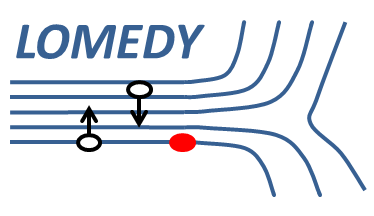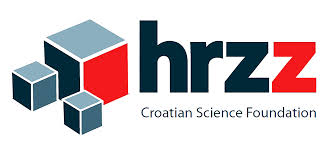

P. Kolar, M. S. Grbić, S. Hrabar, Sensors 19, 03064 (2019)
M. S. Grbić, JAP 125, 224501 (2019)
T. Cvitanić, M. Lukas, M. S. Grbić, Rev. Sci. Instrum. 90, 043903 (2019)
D. Pelc, P. Popčević, M. Požek, M. Greven, and N. Barišić, Sci. Adv. 5, eaau4538 (2019)
D. Pelc, H.-J. Grafe, G. D. Gu, and M. Požek, Phys. Rev. B 95, 054508 (2017).
R. Blinder et al. Phys. Rev. B 95, 020404(R) (2017).
D. Pelc, M. Vučković, H.-J. Grafe, S.-H. Baek, M. Požek, Nature Communications 7, 12775 (2016).
D. Pelc, M. Požek, V. Despoja and D. K. Sunko, New J. Phys. 17, 083033 (2015).
M. Došlić, D. Pelc and M. Požek, Rev. Sci. Instrum 85, 073905 (2014).
T. Cvitanić, D. Pelc, M. Požek, E. Amit, and A. Keren, Phys. Rev. B 90, 054508 (2014).

In a paper published today by Nature Communications our team Damjan Pelc, Marija Vučković and Miroslav Požek in collaboration with researchers from Dresden published a discovery of a nematic charge phase between stripe charge order and a metallic state in La1.8-xEu0.2SrxCuO4, thus explaining how the charge stripes melt in cuprates.
This is already a third paper this year published in Nature Communications in which the authors were researchers from the Department of Physics.
 Charge order is one of the important aspects of the physics of cuprate superconductors, but due to the intinsic disorder in these materials it is difficult understanding how it forms. In a paper published in Nature Communications, members of the Department of Physics: D. Pelc, M. Vučković and M. Požek, in collaboration with researchers from Leibniz Institute for solid state physics (IFW) in Dresden, describe the discovery of the new charge phase in cuprate superconductors. By combining three experimental techniques they confirmed the existance of an unconventional ordered state - an electronic liquid crystal - and resolve issue of the formation of charge orders in cuprates.
Charge order is one of the important aspects of the physics of cuprate superconductors, but due to the intinsic disorder in these materials it is difficult understanding how it forms. In a paper published in Nature Communications, members of the Department of Physics: D. Pelc, M. Vučković and M. Požek, in collaboration with researchers from Leibniz Institute for solid state physics (IFW) in Dresden, describe the discovery of the new charge phase in cuprate superconductors. By combining three experimental techniques they confirmed the existance of an unconventional ordered state - an electronic liquid crystal - and resolve issue of the formation of charge orders in cuprates.
Cuprate superconductors besides the superconductivity itself posses a plethora of electronically ordered phases, out of which charge stripes are of particular interest. In the last few years it has been shown that charge stripes are a universal phenomenon of cuprates, with a possible connection to other important characteristics of these materials - superconductivity and pseudogap. However, because of their perovskite structure and doping, cuprate superconductors are disordered at a microscopic scale. This disorder has a large influence to the formation and appearance of charge stripes and the theoretical studies also predict various interphases between charge stripe and metallic orders. One of such phases - known as a charge nematic - has been experimentally confirmed in this study. Its existence has been confirmed by three experimental techniques: nuclear quadrupole resonance, nonlinear conductivity and heat capacity measurements. Out of these three we emphasise the results of nonlinear conductivity due to its high sensitivity to charge correlations of higher order, and since it was completely developed at the Department of Physics. The discovery of a charge nematic state confirms recent theoretical predictions on the development of charge stripes in cuprates and it ads an important contribution towards the understanding of the physics of strongly correlated electrons in these materials.